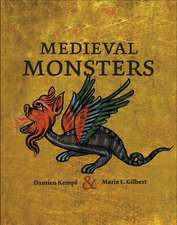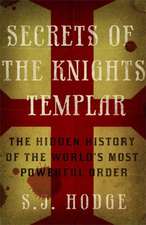Byzantine Orthodoxies: Papers from the Thirty-sixth Spring Symposium of Byzantine Studies, University of Durham, 23–25 March 2002: Publications of the Society for the Promotion of Byzantine Studies
Editat de Augustine Casiday, Andrew Louthen Limba Engleză Paperback – 9 oct 2017
| Toate formatele și edițiile | Preț | Express |
|---|---|---|
| Paperback (1) | 299.52 lei 43-57 zile | |
| Taylor & Francis – 9 oct 2017 | 299.52 lei 43-57 zile | |
| Hardback (1) | 821.13 lei 43-57 zile | |
| Taylor & Francis – 28 apr 2006 | 821.13 lei 43-57 zile |
Din seria Publications of the Society for the Promotion of Byzantine Studies
- 9%
 Preț: 971.05 lei
Preț: 971.05 lei -
 Preț: 313.19 lei
Preț: 313.19 lei - 31%
 Preț: 766.65 lei
Preț: 766.65 lei -
 Preț: 489.26 lei
Preț: 489.26 lei - 30%
 Preț: 768.64 lei
Preț: 768.64 lei - 30%
 Preț: 770.31 lei
Preț: 770.31 lei - 31%
 Preț: 766.24 lei
Preț: 766.24 lei -
 Preț: 489.26 lei
Preț: 489.26 lei - 28%
 Preț: 737.19 lei
Preț: 737.19 lei - 9%
 Preț: 1005.06 lei
Preț: 1005.06 lei - 18%
 Preț: 1059.45 lei
Preț: 1059.45 lei - 27%
 Preț: 833.77 lei
Preț: 833.77 lei -
 Preț: 401.86 lei
Preț: 401.86 lei - 22%
 Preț: 259.98 lei
Preț: 259.98 lei -
 Preț: 389.49 lei
Preț: 389.49 lei - 20%
 Preț: 262.75 lei
Preț: 262.75 lei -
 Preț: 386.81 lei
Preț: 386.81 lei -
 Preț: 392.32 lei
Preț: 392.32 lei -
 Preț: 394.01 lei
Preț: 394.01 lei -
 Preț: 394.71 lei
Preț: 394.71 lei
Preț: 299.52 lei
Preț vechi: 364.17 lei
-18% Nou
Puncte Express: 449
Preț estimativ în valută:
57.33€ • 62.30$ • 48.19£
57.33€ • 62.30$ • 48.19£
Carte tipărită la comandă
Livrare economică 21 aprilie-05 mai
Preluare comenzi: 021 569.72.76
Specificații
ISBN-13: 9781138264991
ISBN-10: 1138264997
Pagini: 250
Dimensiuni: 156 x 234 x 23 mm
Greutate: 0.45 kg
Ediția:1
Editura: Taylor & Francis
Colecția Routledge
Seria Publications of the Society for the Promotion of Byzantine Studies
Locul publicării:Oxford, United Kingdom
ISBN-10: 1138264997
Pagini: 250
Dimensiuni: 156 x 234 x 23 mm
Greutate: 0.45 kg
Ediția:1
Editura: Taylor & Francis
Colecția Routledge
Seria Publications of the Society for the Promotion of Byzantine Studies
Locul publicării:Oxford, United Kingdom
Cuprins
Contents: Preface; Introduction, Andrew Louth. Section I Defining Orthodoxy: The question of Nicene orthodoxy, John Behr; Gregory of Nazianzus as the authoritative voice of orthodoxy in the 6th-century, Caroline Macé; Theotokos-Diadochos, Dirk Krausmüller; Methodios and his synod, Patricia Karlin-Hayter; Prochoros Cydones and the 14th-century understanding of orthodoxy, Norman Russell. Section II Orthodoxy in Art and Liturgy: In the beginning was the Word...: art and orthodoxy at the Councils of Trullo (692) and Nicaea II (787), Leslie Brubaker; ...and the Word was with God...: what makes art orthodox?, Liz James; ...and the Word was God: art and orthodoxy in late Byzantium, Robin Cormack; The British Museum triumph of orthodoxy icon, Dimitra Kotoula; Medieval Byzantine chant and the sound of orthodoxy, Alexander Lingas; Byzantine hymns of hate, Archimandrite Ephrem (Lash). Section III Orthodoxy and the Other: Can we speak of Jewish orthodoxy in Byzantium, Nicholas de Lange; The apostolic foundation stone: the conception of orthodoxy in the controversy between Photius of Constantinople and Isaac surnamed Mrut, Igor Dorfmann-Lazarev; The orthodoxy of the Latins in the 12th century, Tia M. Kolbaba. Epilogue: Some constant characteristics of the Byzantine orthodoxy, Sergei Averintsev. Index.
Notă biografică
Andrew Louth is Professor and Augustine Casiday is Leverhulme Fellow, both in the Department of Theology and Religion at the University of Durham, UK.
Recenzii
’... this volume is a welcome collection of careful research and clear expression on the orthodoxies we usually fail to recognize, whether in the Byzantine or other contexts. Andrew Louth's most insightful introduction, which sets the papers into the larger context of historical theology while also relating them to each other, is especially commended to the reader.’ Logos: A Journal of Eastern Christian Studies
Descriere
These papers discuss how orthodoxy was defined, and the different interests that it represented; how orthodoxy was expressed in art and the music of the liturgy; and how orthodoxy helped shape the Byzantine Empire's sense of its own identity, an identity defined against the 'other'-Jews, heretics and, especially from the turn of the first millennium, the Latin West. These considerations raise wider questions about the way in which societies and groups use world-views and issues of belief to express and articulate identity.
















